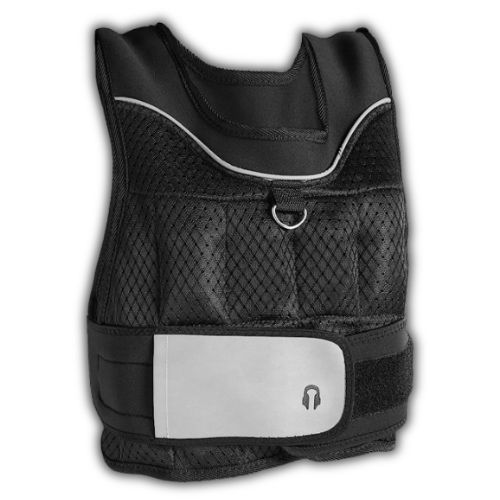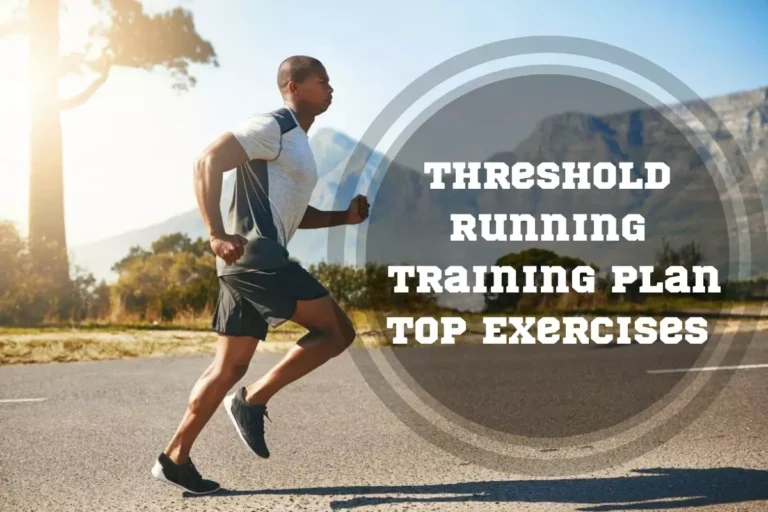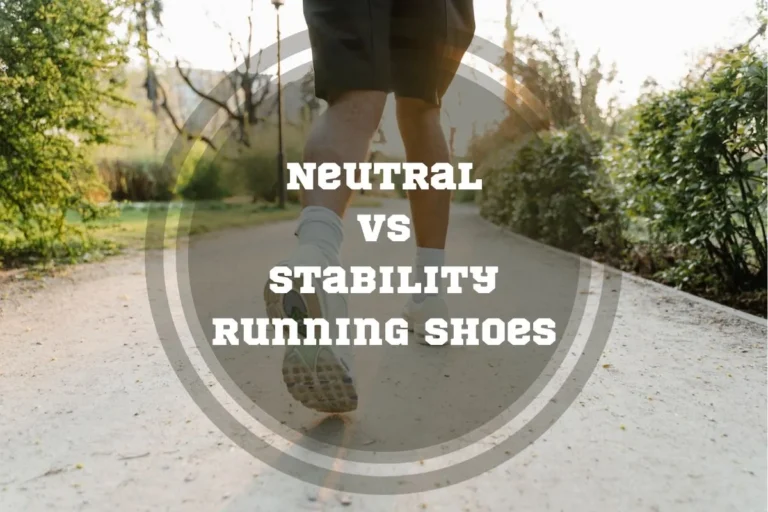Running with a Weighted Vest: Everything You Need to Know to Do It Right
Running may benefit your body in various ways. However, more than running alone is sometimes needed to achieve the desired results. That is where running with a weighted vest comes in.
This post will discuss the risks and benefits of running with a weighted vest. It is an effective tool to increase resistance during running and help build strength and endurance. But what does running with a weighted vest do? Want to know all the details? Then let’s dive in!
What is the purpose of a weighted vest for running?
Running with a weighted vest may seem like an extra challenge, but it can benefit your workout routine. It can help you build strength, improve endurance, and burn more calories. However, it’s important to gradually increase the weight, as it can put extra pressure on your joints and muscles.
What Is a Weighted Vest for Running and Why Do You Need it?
A weighted vest is a vest that has weight plates or sandbags sewn into it. It is designed to add extra weight to your workout, making it more challenging. Weighted vests for running are specifically developed for runners who want to increase their strength and endurance. The vest is worn during your runs, making it an easy way to add resistance to your workout.
You should use a weighted vest for running for several reasons. Firstly, it can help you to build strength and endurance. The added weight will make your muscles work harder, increasing their strength and endurance over time. This will help you to run faster and for longer distances.
Secondly, using a weighted vest can help you to burn more calories. This can be particularly beneficial if you are trying to lose weight or improve your overall fitness. When you practice weighted running, your body has to work harder, which means you burn more calories.
Finally, a weighted vest can help you improve your running form. When you run with a weighted vest, you naturally adjust your posture and form to accommodate the extra weight. This can help you improve your running form, making you a more efficient runner.
Types of Vests with Weighting for Running
There are three main types of weight vest for running:
Fixed weight vests
These vests have a set weight that cannot be adjusted. They are suitable for beginners and intermediate-level runners who are looking to add a little extra resistance to their workouts.
Adjustable weight vests
These vests allow you to adjust the weight by adding or removing weighted plates. They are more versatile and suitable for intermediate to advanced-level runners.
Compression vests
These vests have pockets for weights, which are evenly distributed throughout the vest. They are a comfortable and adaptable option that is suitable for all levels of athletes.
When choosing the right weighted vest for running, you must consider your fitness level, workout goals, and the running exercise you plan to perform. In the table below you can choose the right type of vest according to your fitness level.
Types of Weighted Vests by Fitness level
| Level of Athlete | Type of Vest | Weight |
|---|---|---|
| Beginner | Fixed Weight | 4-10 pounds |
| Intermediate | Adjustable Weight | 12-20 pounds |
| Advanced | Adjustable Weight | 25-45 pounds |
| All levels | Compression | 30-60 pounds |
Our Recommendation
CAP Barbell Adjustable Weighted Vest
Adjustable weighted vest for running with steel packs. Total weight 20-Pound.
How Heavy Should the Weighting Be for Running?
The weight of the vest you choose will depend on your fitness level, workout goals, and running workout. As a general rule, you should start with a comfortable weight and gradually increase it as you become stronger. You should not exceed 10% of your body weight when using a vest for running.
Let’s discuss the main benefits.
6 Benefits of Running with a Weighted Vest
Running with a vest is an excellent way to make your workout more challenging and exciting. Is running with a weighted vest good for you? Let’s discuss the main benefits that weighted running can give you:
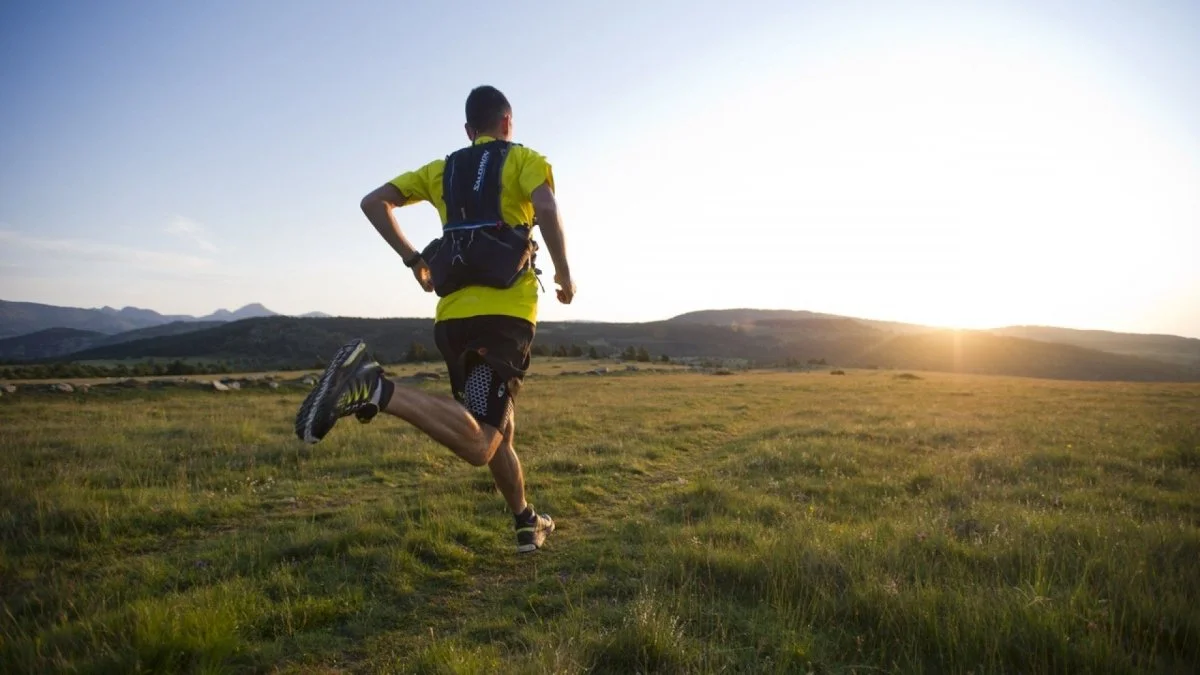
1. Increased Intensity
Running with a weighted vest can increase the intensity of your workout. When you wear a weighted vest, you add extra load to your body, meaning you need to work harder to move your body forward. This increased intensity can help you burn more calories, build muscle, and improve cardiovascular health.
2. Enhanced Endurance
Running with a weighted vest can also help improve your endurance. When you run with a weight, you push your body to work harder, which means your body adapts to the increased workload. This adaptation can grow into improved endurance, which means you can run longer distances without feeling fatigued.
3. Increased Bone Density
Running with a weighted vest can also help increase your bone density. As you run with the added weight of a weighted vest, your bones are subjected to increased stress, which can help stimulate bone growth. This increased bone density can help reduce your risk of osteoporosis, a condition that can weaken your bones and make them more susceptible to fractures.
4. Improved Strength and Power
Running with a weighted vest can help improve your overall strength and power. When you run with a vest, you add resistance to your body, meaning your muscles must work harder to move your body forward. This increased resistance can help you build stronger muscles, improving strength and power.
5. Better Posture
Running with a weighted vest can also help improve your posture. When you wear a vest, you add extra weight to your upper body, meaning you need to engage your core muscles to maintain proper posture. This engagement can help strengthen your core muscles, improving your overall posture.
Subscribe to Our Running Newsletter!
Get free running tips from renowned professional athletes and discounts from top-notch brands.
6. Improved Speed
Does running with a weighted vest help improve running speed? Weighted running can also help improve your speed. When you run with a vest, your body needs to work harder to move forward. This increased workload can help you build stronger leg muscles, translating to improved speed.
3 Drawbacks of Running with Weights
Is running with a weighted vest bad for your body? A few risks are associated with running with weights, and it may not be an appropriate exercise for everyone. Let’s discuss the cons and risks of running with weights and who should avoid it.
1. Increased Pressure on Joints
Running with weights can increase the pressure on your joints, particularly your knees, ankles, and hips. This pressure can lead to joint pain, inflammation, and even injuries. If you have a history of joint problems or injuries, you should avoid running with weights to prevent further damage.
2. Muscle Imbalances
Running with a weighted vest can also create muscle imbalances as your body adjusts to the added weight. This can lead to uneven muscle development, which can cause pain and discomfort. Additionally, muscle imbalances can affect your running form and increase your risk of injury.
3. Overexertion and Fatigue
Finally, running with weights can lead to overexertion and fatigue, especially if you are not used to carrying extra weight while running. This can increase your risk of injury and make it difficult to maintain proper running form. If you are prone to fatigue or overexertion, you should avoid running with weights.
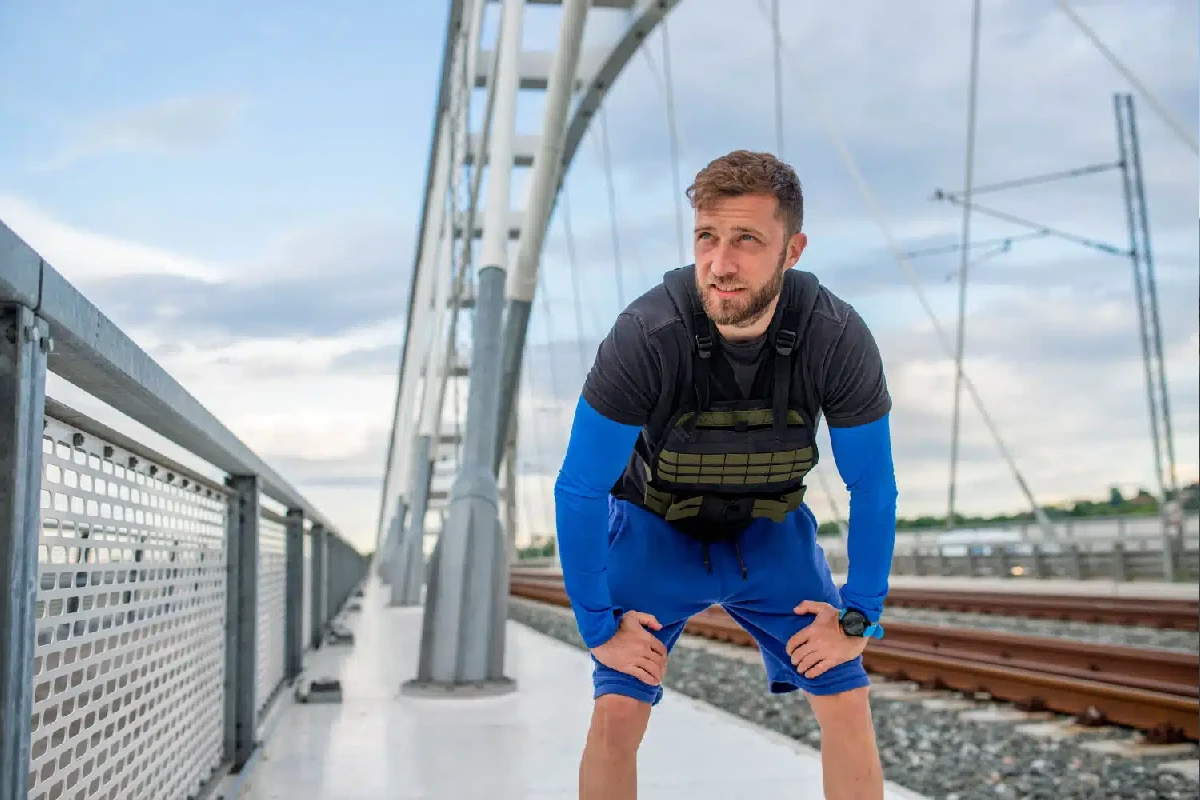
3 Factors that You are Ready to Run With a Weighted Vest
Running with a weighted vest has become increasingly popular for fitness enthusiasts seeking to increase the intensity of their workouts. However, before strapping on a weighted vest and hitting the pavement, it’s important to consider whether you’re ready and if it’s necessary. Let’s discuss how to understand if you’re ready to run with a weighted vest and what to consider before starting.
1. Understanding If You’re Ready
Running with a weighted vest can be challenging, even for experienced runners. Evaluating your fitness level before attempting to run with a weighted vest is crucial. If you’re new to running or haven’t exercised regularly, start with bodyweight workouts and build up your strength and stamina before adding extra weight. Additionally, if you have any existing injuries or medical conditions, it’s important to consult with a healthcare professional before using a weighted vest.
2. Do You Need a Weighted Vest?
While running with a weighted vest can increase the intensity of your workout and burn more calories, it’s not necessary for everyone. If you’re already a seasoned runner looking to challenge yourself, a weighted vest may be a good addition to your workouts. However, it’s best to focus on building a solid foundation if you’re starting or looking to increase your fitness level. It’s also important to consider the vest’s weight and how it will affect your running form and posture.
3. Considerations before Starting
Before running with a weighted vest, it’s essential to consider a few factors:
- Before running with a weighted vest, it’s essential to consider a few factors:
- Choose a vest that fits well and is comfortable to wear. A too-loose or heavy vest can cause discomfort and even injury.
- Start with a lighter weight and gradually increase the weight as you become more comfortable and stronger.
- Consider your form and posture while running with a weighted vest.
It’s important to maintain proper form to avoid injury.
4 Basic Tips on How to Run With a Weighted Vest
Knowing how to run with a vest safely and effectively is important. Here are the five tips that will help you start running with a weighted vest.
1. Start Slowly
If you have never run with a weighted vest before, it is important to start slowly. Begin with a vest of only about 1% to 3% of your body weight. It is essential to listen to your body and not push yourself too hard too quickly. You can gradually increase the vest’s weight as you get more comfortable.
2. Focus on Good Form
When running with a vest, it is important to maintain good form. This means keeping your shoulders back, your core engaged, and your feet landing softly on the ground. Avoid slouching or leaning forward, as this can strain your back and knees.
3. Run on Flat Surfaces
Avoid running on uneven terrain, as this can increase your risk of injury. Avoid running on slippery surfaces, such as wet grass or ice. It is best to stick to flat surfaces, such as roads or sidewalks, when running with a weighted vest.
4. Limit the Amount of Time You Run with the Vest
It is not recommended to run with a weighted vest every day. Instead, limit your runs with the vest to two or three times per week. This will help prevent injury and give your body time to recover.
FAQ about Running with a Weighted Vest
Below we provide answers to the most common questions that athletes address when they want to add a weighted vest in their training routine.
Does Running With Weights Help Build Muscle?
While running with weights can increase your overall body strength and endurance, it may not build muscle mass. Instead, it can help tone and define your muscles. Running with a weighted vest can put extra stress on your joints, increasing the risk of injury. Ultimately, it’s important to consider your fitness goals before incorporating weights into your running routine.
Is Long-Distance Running With Weights Good for You?
There has been some debate about whether long-distance running with weights is beneficial or harmful. While some argue that it can increase endurance and strength, others warn that it can cause injury and strain on the body. It’s important to consult with a professional and listen to your body when incorporating weights into your running routine.
Does Running With a Weight Vest Help Lose Weight?
Running with a weight vest is a great way to increase the intensity of your workout. It can help burn more calories and build strength. It also can be a helpful tool for weight loss, but it should be combined with a balanced diet and regular exercise routine.
Does Running With a Weighted Vest Make You Faster?
The answer is yes. Running with a weighted vest can improve your running performance by increasing your strength, power, and cardiovascular endurance. However, it’s important to start with a light weight and gradually increase it to avoid injury.
Why Should you try running with a weighted vest – The final thoughts
Running with a weighted vest can be a challenging and effective way to take your running to the next level. However, it’s important to approach this type of training with caution and gradually build up to heavier weights. Be aware of the risks and follow the tips mentioned above.
With the right precautions, running with a vest can be a great addition to your running routine. You can reap the benefits of running with a weighted vest while avoiding potential injuries.
Have you ever tried running with a weighted vest? Please share your experience in the comments below.
Also read:
- Running 5 Miles a Day
- 10 Minute Mile
- Does Running Give You Abs
- Average Human Running Speed
- Running in the Evening
- How Many Miles Is a 5K Steps
- How Long Is A 10K Race
- Best Running Hats
- Average 2 Mile Run Time
- 2 Miles Is How Many Steps
References:
- Effect of weighted vest suit worn during daily activities on running speed, jumping power, and agility in young men // PubMed: https://pubmed.ncbi.nlm.nih.gov/22266642/
- FEASIBILITY OF WEIGHTED VEST USE DURING A DIETARY WEIGHT LOSS INTERVENTION AND EFFECTS ON BODY COMPOSITION AND PHYSICAL FUNCTION IN OLDER ADULTS // PMC: https://www.ncbi.nlm.nih.gov/pmc/articles/PMC6489119/
- Incorporating Nutrition, Vests, Education, and Strength Training (INVEST) in Bone Health: Trial Design and Methods // PMC: https://www.ncbi.nlm.nih.gov/pmc/articles/PMC8180512/
- Warm-up with a weighted vest improves running performance via leg stiffness and running economy // PubMed: https://pubmed.ncbi.nlm.nih.gov/24462560/
- Effects of weighted vests and sled towing on sprint kinematics // PubMed: https://pubmed.ncbi.nlm.nih.gov/18610770/
- Acute and longitudinal effects of weighted vest training on sprint-running performance: a systematic review // PubMed: https://pubmed.ncbi.nlm.nih.gov/31070108/
If you have any questions or suggestions, you can contact us via email – [email protected]

